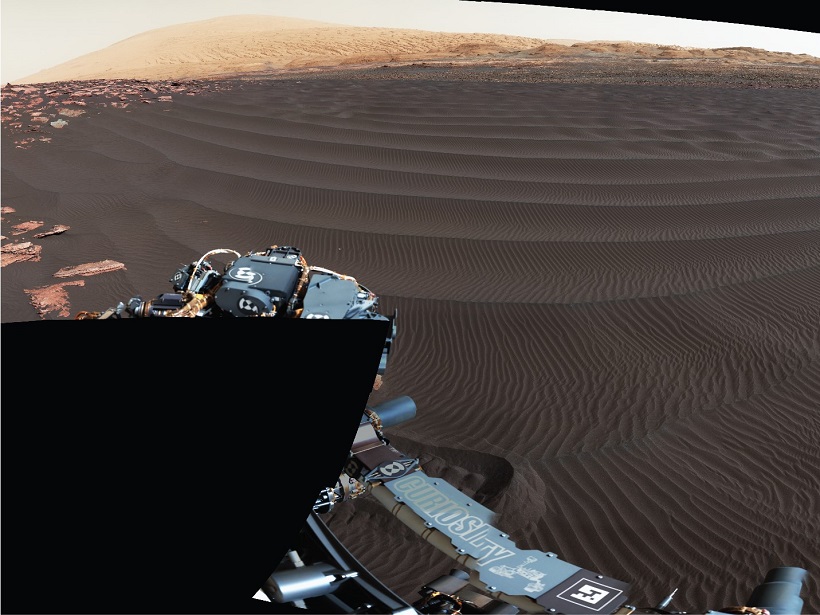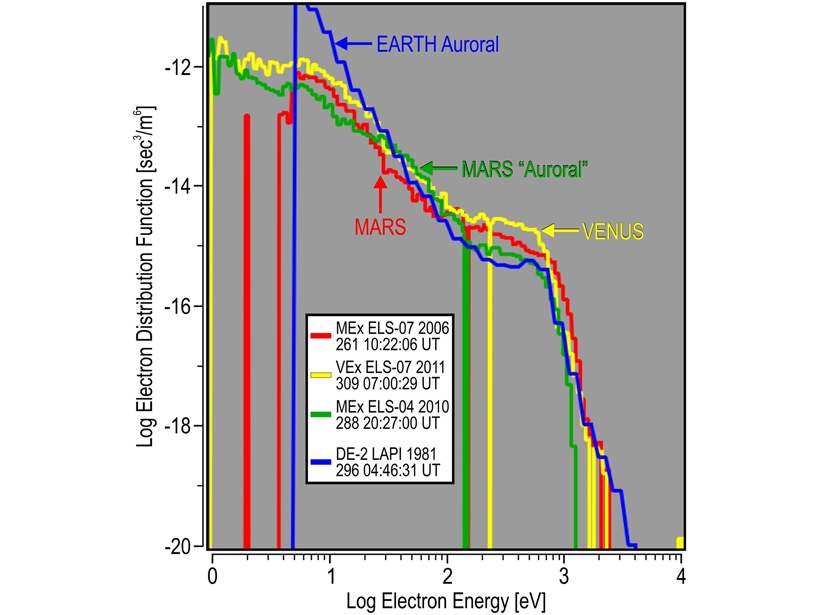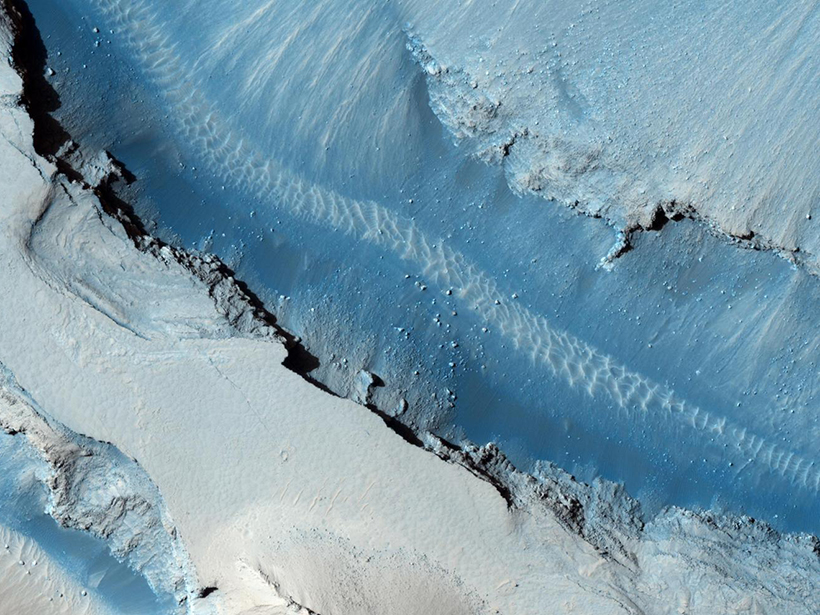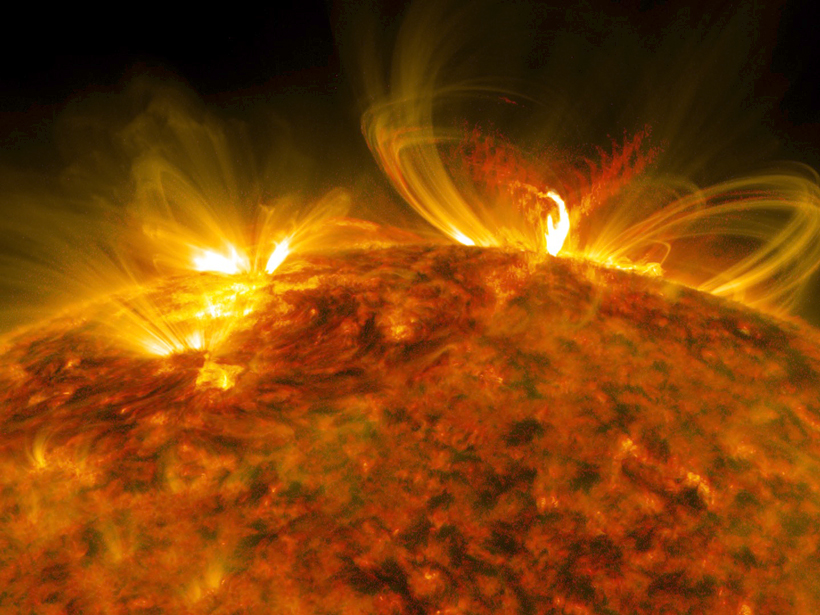Some pools of salty water on the Red Planet could contain enough dissolved oxygen for microorganisms and sponges to survive, new calculations suggest.
Mars
Seeing Mars in a Grain of Sand
The second phase of Curiosity’s campaign at the Bagnold Dunes brought new observations of windblown sands during Mars’s windy season.
Extreme Space Conditions at Mars: The 10 Largest Electron Events
A solar cycle of data was scoured for the biggest electron energy fluxes seen in the Mars space environment.
Searching for Signs of Marsquakes
Researchers use high-resolution images of Mars’s surface to look for signals of coseismic displacement.
Evidence of Regional Deposition in Mars’s South Polar Deposits
Shallow Radar correlation of discrete units in one of the Red Planet’s largest ice reservoirs suggests that its material was emplaced as a single, regional deposit.
Is Mars Not So Earthlike After All?
Light-colored Gale crater rocks could have formed from intraplate volcanoes, not continental crust, new study finds.
Tracing the Steps of Hydrothermal Activity in Hrad Vallis, Mars
Conditions that formed Amazonian age valleys may have been hospitable to microbial life.
Solar Flare Caused Increased Oxygen Loss from Mars’s Atmosphere
Measurements by a Mars-orbiting spacecraft indicated heating and chemistry changes in the planet’s atmosphere following an extreme solar eruption last year.
Scientists Discover an Environment on the Cusp of Habitability
A volcanically heated Costa Rican lake hosts only one type of organism, suggesting that its Mars-like environment is just barely capable of supporting life.
New Lander en Route to Probe the Red Planet’s Interior
The Mars InSight mission aims to answer key planetary science questions about seismicity, meteorite impacts, and the formation of rocky planets.










